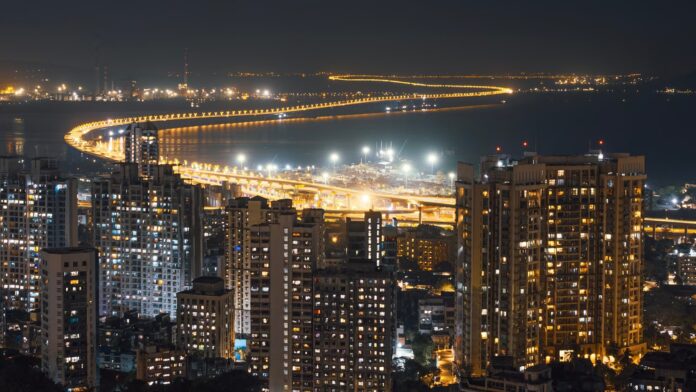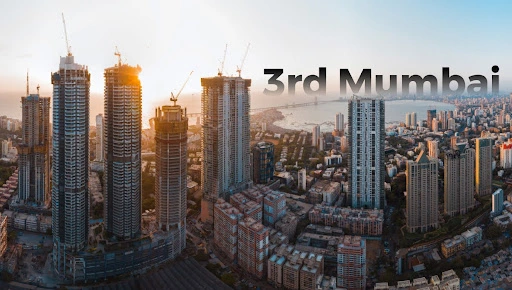Third Mumbai, the ambitious project by the Maharashtra government, is set to redefine urban development in India. This visionary city, officially known as the Karnala-Sai-Chirner (KSC) New Town, is being planned in the Raigad district to cater to India’s growing need for modern infrastructure and sustainable urban expansion.
The proposal aims to transform Raigad into a hub for technological innovation, economic growth, and residential excellence. The government envisions this new city as a crucial part of its strategy to boost the Mumbai Metropolitan Region’s GDP to a staggering $300 billion, positioning Maharashtra as a leader in India’s urban evolution.
Why Third Mumbai Is A Game-Changer?
The concept of Third Mumbai is rooted in the need to decentralize Mumbai’s overwhelming urban density. As one of the most populous cities in the world, Mumbai has been grappling with challenges such as traffic congestion, limited housing, and environmental degradation.
By developing a new city in Raigad, the state aims to alleviate these pressures while creating a state-of-the-art urban ecosystem. The project will integrate smart city technologies, eco-friendly infrastructure, and efficient transport networks, setting a benchmark for future urban developments in India.
The Role Of Data Centers In Third Mumbai
One of the standout features of Third Mumbai is its focus on becoming a data hub. Reports suggest that the city will host 65% of India’s data centers, making it a critical player in the digital economy.
With the surge in data consumption and the growing reliance on cloud computing, the need for advanced data storage facilities has never been greater. Third Mumbai’s strategic location and cutting-edge infrastructure make it an ideal choice for housing these facilities. This move is expected to attract significant investments, further fueling the city’s economic growth.
A Detailed Master Plan For The Future
Surveys scheduled for 2025 will cover 124 villages in the Raigad district to lay the groundwork for a comprehensive master plan. The aim is to balance modern urban planning with the preservation of local culture and resources.
The master plan will prioritize sustainability, ensuring that the city’s development does not come at the expense of the environment. Green spaces, renewable energy sources, and efficient waste management systems will be integral to the city’s design.
Economic Impact Of Third Mumbai
The establishment of Third Mumbai is expected to generate massive economic opportunities for the region. From construction jobs to technology-driven roles, the project will create employment across various sectors.
Moreover, the influx of businesses and investments will enhance the area’s economic landscape, benefiting local communities and boosting Maharashtra’s overall economic health. The city is also likely to become a hotspot for real estate development, with demand for residential and commercial properties expected to surge.
Transport Infrastructure: The Backbone Of Third Mumbai
Efficient transport is crucial for the success of any urban project, and Third Mumbai is no exception. Plans include a seamless transport network connecting the city to Mumbai and other parts of Maharashtra.
Modern public transport systems, including metro lines and expressways, will ensure easy accessibility while reducing traffic congestion. The proposed Navi Mumbai International Airport will further enhance the city’s connectivity, making it an attractive destination for global investors and businesses.
Learning From Past Urban Projects
India’s urban history offers valuable lessons for the development of Third Mumbai. Projects like Navi Mumbai and Lavasa have highlighted the importance of meticulous planning, transparent governance, and community involvement.
By learning from these experiences, the Maharashtra government aims to avoid pitfalls and ensure the success of this ambitious project. Public consultations and stakeholder collaborations will play a pivotal role in shaping the city’s development.
Challenges Ahead
Despite its promise, the development of Third Mumbai is not without challenges. Land acquisition, environmental clearances, and funding are some of the hurdles that need to be addressed.
Additionally, balancing rapid urbanization with sustainability is a complex task that requires careful planning and execution. Ensuring the inclusion of local communities in the development process is equally important to avoid displacement and social unrest.
The Bigger Picture: Maharashtra’s Vision For The Future
Third Mumbai is not just a city; it is a symbol of Maharashtra’s vision for the future. It reflects the state’s commitment to innovation, sustainability, and economic growth.
As India continues its journey towards becoming a global economic powerhouse, projects like Third Mumbai will play a crucial role in shaping the country’s urban landscape. By investing in such forward-thinking initiatives, Maharashtra is setting an example for other states to follow.
A New Dawn For Urban Development In India
The development of Third Mumbai marks a significant milestone in India’s urban planning journey. It combines technological advancement with environmental sustainability, creating a blueprint for the cities of tomorrow.
With its focus on innovation, connectivity, and inclusivity, Third Mumbai is poised to become a model city that redefines urban living in India. As the project takes shape, it promises to usher in a new era of growth and prosperity for Maharashtra and the nation.



